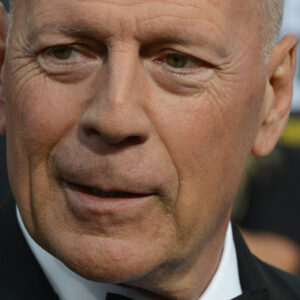Introduction
In the grand cinematic tradition of Peter Jackson’s The Hobbit trilogy, the world of Middle-earth comes alive in vivid colors, sprawling landscapes, and, of course, epic music. While the sweeping orchestral scores by Howard Shore provided much of the series’ musical backbone, one song stands out, casting its own unique spell: Ed Sheeran’s “I See Fire.” Released in 2013, this emotionally resonant track was created specifically for The Hobbit: The Desolation of Smaug, and in doing so, it became not just a musical accompaniment but an emotional anthem that weaved seamlessly into the fabric of the film.
Ed Sheeran may have already been a beloved figure on the music scene by then, but “I See Fire” marked his first significant contribution to a major motion picture. The song quickly captured the attention of fans and critics alike, not only for its melodic and lyrical brilliance but also for how it mirrored the depth and gravitas of the story. The synergy between Sheeran’s artistry and Jackson’s cinematic vision created a piece of music that transcended its role as a soundtrack addition, cementing its place in the larger legacy of the Hobbit series.
This article dives into the elements that made “I See Fire” such an impactful piece, exploring Sheeran’s collaboration with Jackson, the songwriting process, the acoustic nature of the track, and its emotional resonance, as well as its legacy in the world of film music.
Collaboration with Peter Jackson: A Meeting of Minds
A critical element in the creation of “I See Fire” was Ed Sheeran’s collaboration with the visionary director Peter Jackson. Unlike many soundtrack contributions that are written after viewing the final cut, Sheeran was invited into Jackson’s world early on. The artist was given access to an early screening of The Desolation of Smaug, and it was during this private viewing that the spark for “I See Fire” was ignited.
Sheeran himself has remarked on how surreal the experience was: to sit in a room, watching this vast, detailed universe unfold, and then be tasked with creating a song that could encapsulate the film’s emotional core. Jackson, known for his hands-on approach to every element of his films, worked closely with Sheeran, ensuring the song matched the tone, mood, and themes of the narrative. This partnership between director and musician was vital in crafting a song that not only complemented the film but enhanced its emotional depth.
One key aspect of this collaboration was the immediacy with which Sheeran worked. After watching the film, he reportedly wrote and recorded the song within a single day. The pressure of capturing the emotional weight of the movie in such a short time might have overwhelmed a lesser artist, but for Sheeran, it seemed to galvanize his creativity. The result was a song that feels both spontaneous and meticulously crafted, a perfect reflection of the film’s emotional landscape.
Songwriting and Inspiration: Tapping into Middle-earth
At its core, The Hobbit is a story about heroism, friendship, and the constant looming presence of danger. These themes resonated deeply with Sheeran, who crafted the lyrics to “I See Fire” as a reflection of the dwarves’ perilous journey and their unwavering bond with Bilbo Baggins. The song taps into the climactic tension as they prepare to face the deadly dragon Smaug, creating a sense of urgency and foreboding that permeates the entire piece.
Lyrically, Sheeran leans into imagery that evokes fire and destruction—symbols that play a significant role in the narrative. The repeated line, “I see fire, inside the mountain,” is a direct reference to Smaug’s lair in the Lonely Mountain, but it also speaks to the internal fire that burns within the characters. The song is not just about physical danger but also the emotional resilience of the dwarves as they face overwhelming odds.
There’s an elemental quality to Sheeran’s writing here. Fire, as a symbol, is multifaceted—it represents both destruction and survival, danger and warmth. In the context of the film, the fire threatens to consume everything the dwarves hold dear, yet it also becomes a metaphor for the burning courage that drives them forward. Sheeran’s lyrics capture this duality with poetic precision, balancing the song’s darker undertones with moments of hope and determination.
Acoustic Simplicity: Stripped Down for Maximum Impact
One of the standout qualities of “I See Fire” is its acoustic arrangement. In an age where blockbuster soundtracks often rely on grandiose orchestral sweeps and booming electronic beats, Sheeran took a different approach. By stripping the song back to its bare essentials—a simple guitar melody, accompanied by a haunting violin and a subtle drum beat—Sheeran allowed the emotion of the song to take center stage.
This minimalist instrumentation fits perfectly within the world of Middle-earth. The rustic, earthy qualities of the acoustic guitar echo the natural beauty and rugged terrain of the film’s setting, while the sparseness of the arrangement mirrors the isolation and vulnerability of the characters. There is something primal about the song’s simplicity, which taps into the raw, elemental themes of The Hobbit.
The decision to keep the production minimal also allows Sheeran’s vocals to shine. His voice, unadorned and intimate, carries the weight of the song’s emotion. There is a fragility in his delivery, particularly in the verses, that mirrors the dwarves’ uncertainty as they head into the unknown. Yet, as the song builds, there is also a sense of quiet strength, particularly in the repeated refrain, “I see fire.” It’s as if Sheeran is channeling the resilience of the characters through his voice, giving the song an emotional punch that is impossible to ignore.
Emotional Resonance: A Haunting Anthem
“I See Fire” is a song that lingers long after the final note fades. Part of its power lies in its emotional depth. Sheeran’s raw vocal delivery, combined with the haunting melody, creates a mood that is both somber and uplifting. The song feels like a lament—a reflection on the dangers ahead—but it also carries a sense of quiet resolve. It’s a song about fear, but also about the courage to face that fear head-on.
The emotional resonance of “I See Fire” is amplified by its use in the film. As the end credits roll, the song serves as a moment of reflection for the audience, a way to process the intense journey they’ve just witnessed. It’s a quiet, introspective ending to a film that is filled with action and spectacle, and it allows the audience to sit with the emotional weight of the story before they leave the theater.
Beyond the context of the film, “I See Fire” has taken on a life of its own. Fans of Sheeran have embraced the song as one of his most powerful tracks, and it has become a staple of his live performances. There is something universal in the song’s themes of danger, resilience, and brotherhood that resonates with listeners, even outside the world of Middle-earth.
Reception and Legacy: A Lasting Impact
Upon its release, “I See Fire” was met with widespread acclaim. Fans and critics alike praised Sheeran for his ability to capture the emotional core of The Hobbit: The Desolation of Smaug and translate it into a song that felt both timeless and contemporary. The track charted in several countries and became a commercial success, further cementing Sheeran’s status as one of the most talented songwriters of his generation.
What makes “I See Fire” particularly noteworthy in the realm of film music is how seamlessly it blends with the cinematic experience. It doesn’t feel like a pop song tacked onto the end of a movie to appeal to a younger audience. Instead, it feels like an organic extension of the film’s narrative, a song that belongs in the world of Middle-earth as much as any of the orchestral pieces that accompany the action on screen.
In the years since its release, “I See Fire” has continued to be celebrated as one of the standout tracks in modern movie soundtracks. Its legacy is not just in its chart success but in how it has become a touchstone for fans of both Sheeran and The Hobbit. It’s a song that elevates the emotional experience of the film while also standing on its own as a powerful piece of music.
Conclusion: The Fire Burns On
Ed Sheeran’s “I See Fire” did more than accompany The Hobbit: The Desolation of Smaug—it brought an additional layer of emotional depth to the story, blending Sheeran’s signature acoustic style with the epic scale of Middle-earth. Its poignant lyrics, collaboration with Peter Jackson, and stripped-back simplicity have ensured its place as a memorable and iconic piece of film music.
As we continue to revisit the world of Middle-earth, “I See Fire” stands as a reminder of the power of music to enhance storytelling. It’s a song that resonates not just because of its connection to a beloved film series, but because it taps into something universal—our fear of the unknown, and our courage to face it. In the years to come, “I See Fire” will continue to burn bright, both in the hearts of Sheeran’s fans and in the legacy of The Hobbit.





